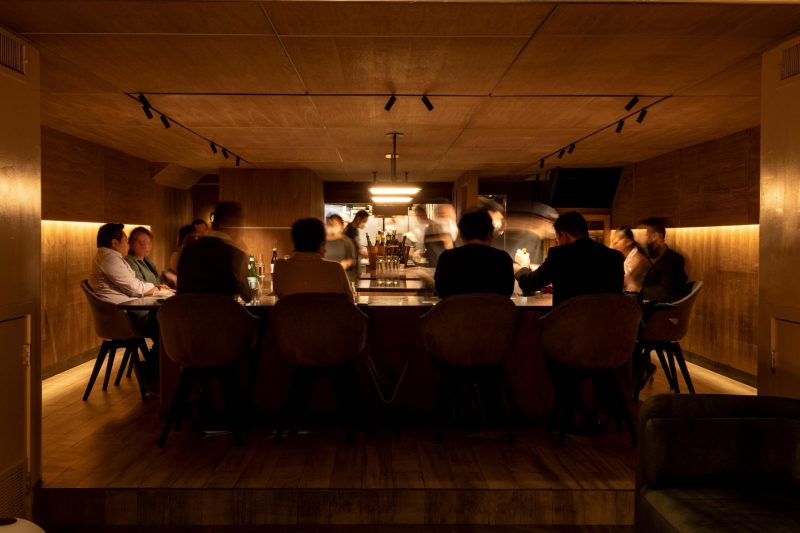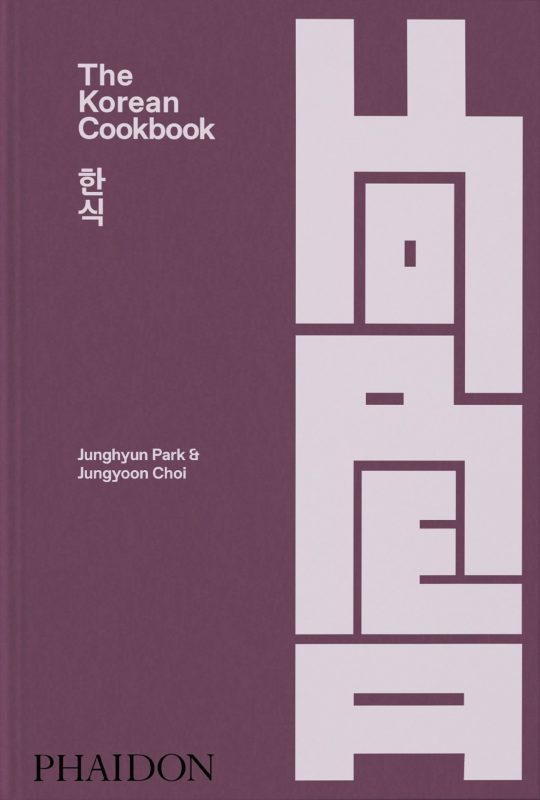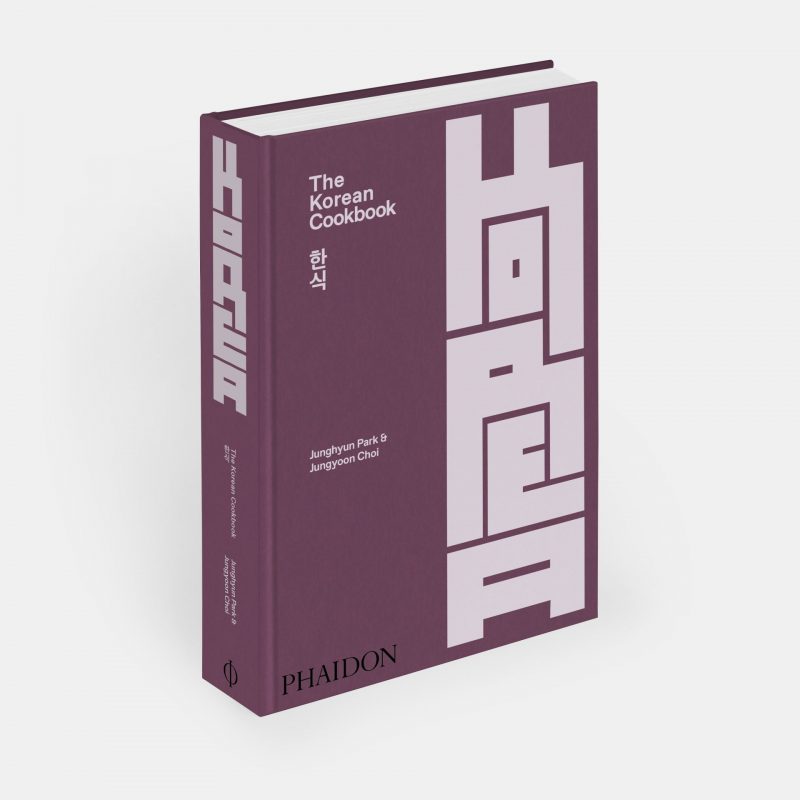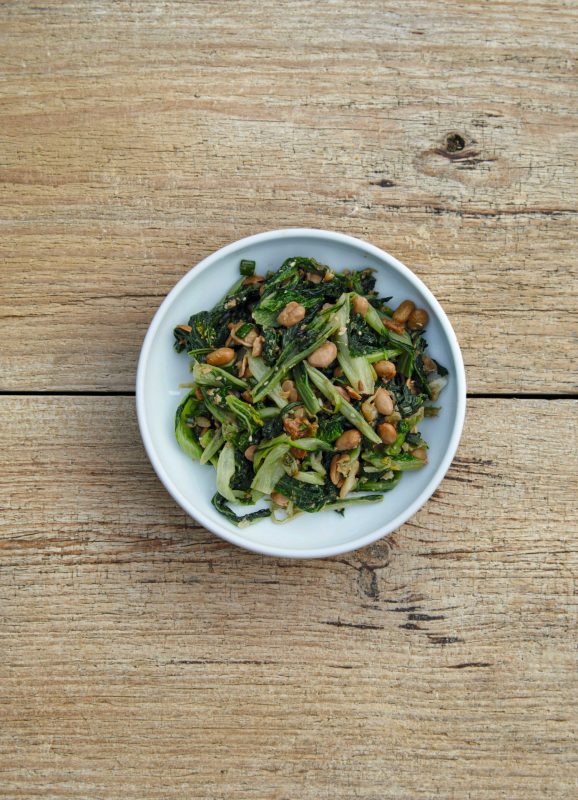feature photo credit: Peter Ash Lee
“As a chef, to understand my own identity, I was naturally drawn to my Korean heritage,” says Seoul-born Junghyun Park, who goes by JP.
After stints at renowned fine dining establishments, including The Ledbury in London, Melbourne’s Cutler & Co., and Jungsik (in both Seoul and New York), Park and his wife Ellia opened Atoboy (in NYC’s NoMad neighbourhood) in 2016. Now, it’s safe to say the duo has found a sweet spot within the NYC restaurant scene, stirring thought-provoking discussions around Korean cuisine or hansik through two Michelin-starred Atomix, NARO (Rockefeller Center) and Seoul Salon (Koreatown). “Each concept has a distinct mission and message about hansik that we hoped to deliver to the dining scene of New York City, says JP Park. “I wanted to introduce my cuisine to the dining scenes and diners of New York City, America, and the world, as a gift that I carefully prepared.”
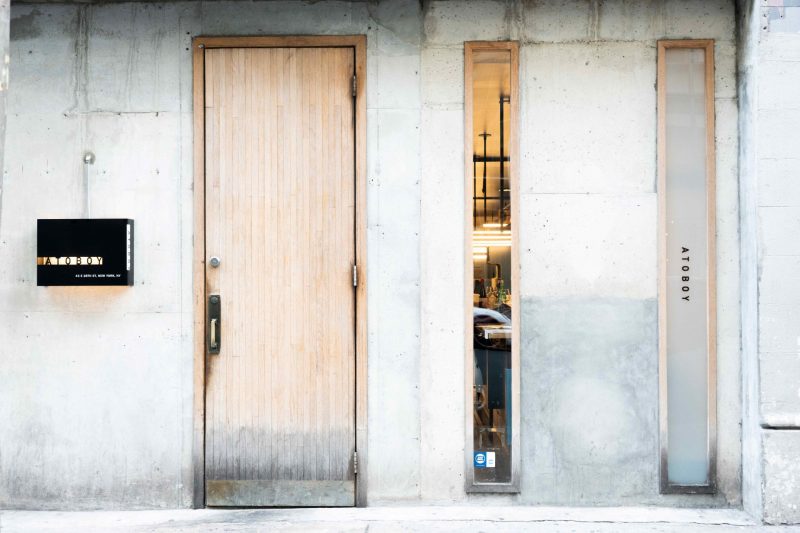

Atomix dining | photo credit: Evan Sung 
NARO | photo credit: Charissa Fay
Together with Jungyoon Choi, an acclaimed expert on Korean food history, Park has just released The Korean Cookbook. From fermentation and bap (cooked rice) to banchan (side dishes or small plates), each chunky chapter takes readers beyond the notion of barbecue. With 5000-plus years of rich history, expertly weaved into the narrative are essays, 350 recipes, and collaborative insights from several ‘masters’ of their craft. “The more you study, the more you realize how much there is still yet to be known,” says the recently crowned James Beard Foundation Best Chef: New York State 2023.

Chef Junghyun Park | credit: Peter Ash Lee 
The Korean Cookbook | credit: Phaidon 
Jungyoon Choi | credit: Jae Young Heo
We spoke to Park about common myths or misconceptions, bringing his modern Korean cuisine to New York City, crafting a stunning tome and his hopes for the restaurant industry.
Is there a childhood memory around food that has shaped what you do as a chef now?
Rather than one special memory, my childhood was marked by my general interest in food and spending time in the kitchen. During traditional Korean holidays, where food is the center of the celebrations, I was always eager to assist my mother and family in preparing the table spread, such as making jeons [fritters]. I think this natural inclination towards food and cooking has set the foundation of my career as a chef.
What are some of the common myths or misconceptions about Korean food?
In the mainstream media or many short-form media, Korean food is often depicted as a very [sinus] stimulating, strong-spiced cuisine. Of course, these taste profiles, such as spicy, are an important facet of Korean food. Yet, there is a larger grouping of traditional Korean flavours, such as the namul category which contains a variety of vegetables, which highlight a very subtle side of Korean cuisine that has not become well-known yet.
What does ‘new Korean cuisine’ mean to you?
To me, new Korean cuisine is a collective of perspectives on what tomorrow’s hansik could be, [but] rooted in the long and storied history of the past. There is no one ‘correct’ answer to this question: many people are working to create a better future for hansik, the evolution.
There has been a lot of praise for both you as a chef and your restaurants. How do you feel to be at the forefront of new Korean cuisine?
I don’t necessarily think that I am at the forefront of new Korean cooking. There are many important people who are – in their own lane of work – working in innovative and experimental ways. I think of myself as a part of this collective and look forward to [seeing] the work of all my peers.
At Atomix, you don’t have signature dishes. How does that aid your creativity?
Atomix is only five years old; almost half of its life was during the remarkably unusual circumstances of COVID-19. I still consider it a very young restaurant with much room to grow into its own form. I work with my team daily to incorporate our new lessons and learnings [as well as] infuse ideas that evolve through my travels, experiences and more to create a better Atomix of tomorrow.
Is there a recipe (or two) from your cookbook that you hope readers will try?
It is truly a large book with 350 recipes. Rather than highlighting ‘star recipes,’ our wish is [to] tell the story of our people through our cuisine. The way of life in Korea is through the communal culture of banchan and conversation over bap. I think this is one of the most important aspects that shape our Korean culture, and I hope that sharing this perspective is what this book can achieve.
How has your relationship with Korean cooking changed since writing the book?
Through the research, I encountered many culinary techniques or cultures that have become less common or known due to trends, meticulous preparation or difficulty. I want to study these more, to evolve them to modern times and deliver this knowledge to the next generation.
India has banned rice exports due to climate change causing a shortage. How do you think foodways will adapt?
In contrast, Korea sometimes deals with an overproduction of rice. There is a cohort of professionals dedicated to figuring out a sustainable solution, such as alcohol production using rice [for example]. As Korean agriculture becomes more global and we develop more ways to enjoy its production, I think we will organically find a balance.
What are your hopes for the restaurant industry of the future?
To eat and to share this time with others is one of the most beautiful parts of [living]. I hope that our industry that provides these moments will continue to evolve into a better version of ourselves and preserve and improve the best parts of our industry for future generations.
What’s next for you?
To continue to establish the identity and operations of our existing restaurants and to continue to study, research, and develop the future of hansik.
NAPA CABBAGE & FERMENTED SOYBEAN MUCHIM (Baechu Cheonggukjang Muchim)
Adapted from The Korean Cookbook by Junghyun Park and Jungyoon Choi
(Phaidon, US $54.95, 2023)
Photography by: Jinju Kang
Page: 438-439.

The Korean Cookbook | credit: Phaidon 
Napa Cabbage & Fermented Soybean Muchim | credit: Jinju Kang
Excerpted from The Korean Cookbook© 2023 by Junghyun Park and Jungyoon Choi. Photography © 2023 by Jinju Kang. Reproduced by permission of Phaidon. All rights reserved.
Dairy-free, Vegetarian, Vegan
Preparation time: 15 minutes
Cooking time: 10 minutes
Serves: 4-6
The sweet, savory flavors inherent in the napa cabbage (Chinese leaf) is heightened when seasoned with the depth of flavor of cheonggukjang (Fermented Soybeans). This vegetable dish is one of the signature banchan (side dishes) of Master Ki.
INGREDIENTS
- 1 teaspoon salt
- 2 ¼ lb (1 kg) napa cabbage (Chinese leaf), halved lenghthwise
- 1 tablespoon ganjang (Korean soy sauce)
- 7 oz (200 g) cheonggukjang (Fermented Soybeans), store-bought or homemade (see below)
- 2 teaspoons sesame oil
- ½ tablespoon minced garlic
- 3 tablespoons minced scallion (spring onion)
- 1 teaspoon ground sesame seeds
DIRECTIONS
In a pot, combine 3 cups (24 fl oz/710 ml) water and the salt and bring to a boil. Once boiling, add the cabbage, root end first, and cook for 3 minutes. Drain the cabbage and let cool. Once cool enough to handle, cut into 11/4–11/2-inch (3–4 cm) squares and squeeze to remove excess water.
In a bowl, combine the cooked cabbage and soy sauce and mix well until the cabbage is well seasoned. Squeeze the cabbage again to remove excess moisture.
In a bowl, combine the seasoned cabbage with the fermented soybeans, sesame oil, garlic, and scallion and massage well to combine. Mix in the ground sesame seeds.
FERMENTED SOYBEANS (Cheonggukjang)
Adapted from The Korean Cookbook by Junghyun Park and Jungyoon Choi
(Phaidon, US $54.95, 2023)
Photography by: Jinju Kang
Page: 437.
Dairy-free, Vegetarian, Vegan
Preparation time: 30 minutes, plus 6 hours soaking time and at least 1 month fermentation
Cooking time: 2 ½ hours
Serves: 4
Cheonggukjang is made by boiling soybeans until they are fully cooked and then fermenting them in straw, rice, or wheat for two or three days. It is made much more quickly than doenjang and is famed for its deep, earthy flavor and distinct smell.
INGREDIENTS
- 7 oz (200 g) dried soybeans
- Salt
DIRECTIONS
Soak the soybeans in a large bowl of cold water for 6 hours.
In a pot, combine the soaked soybeans and 4 cups (32 fl oz/950 ml) water. Cover and bring to a boil over high heat. Once boiling, reduce the heat to medium and cook for 2 hours, adding more water as the water evaporates to prevent burning. At the end of 2 hours, there should be little water remaining and the soybeans should be soft to the touch and easily crushable by hand. Remove from the heat, cover, and let steam for 30 minutes. Drain the soybeans in a colander.
Cover the entire colander with a large plastic bag and ferment at 122°F (50°C) for 42 hours. In a Korean home setting, this tempera- ture is achieved by setting the soybeans on a heating pad and covering with a blanket.
In a large bowl, combine the fermented soybeans with salt 3 percent the volume of the soybeans and mash together in a mortar into a coarse paste. Divide into portions of about 6 tablespoons (100 g) and seal in plastic wrap (cling film) or a zip-seal plastic bag and store in the refrigerator for up to 1 month.
Aman Dosanj is a food and marketing geek, former England and Arsenal footballer, feminist, middle child, not your conventional brown person, adventurer, From the Wild alum, imperfect environmentalist, storyteller, and just weird enough to be interesting. She is known for her ability to educate, connect and tell stories through food, working with local farmers and producers to create edible adventures in unexpected places with The Paisley Notebook. The best concert she ever attended was Florence and the Machine in Hyde Park, London.

